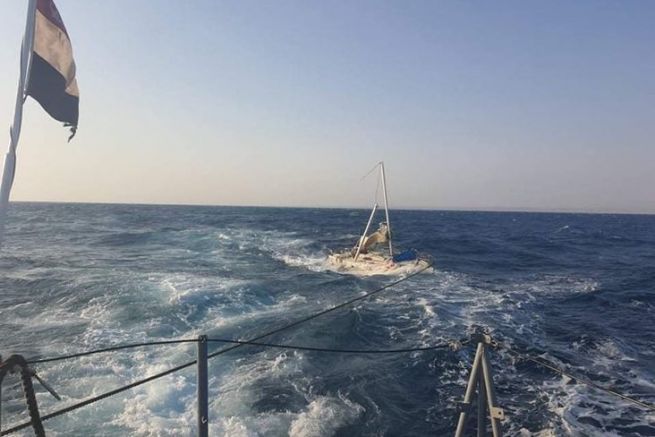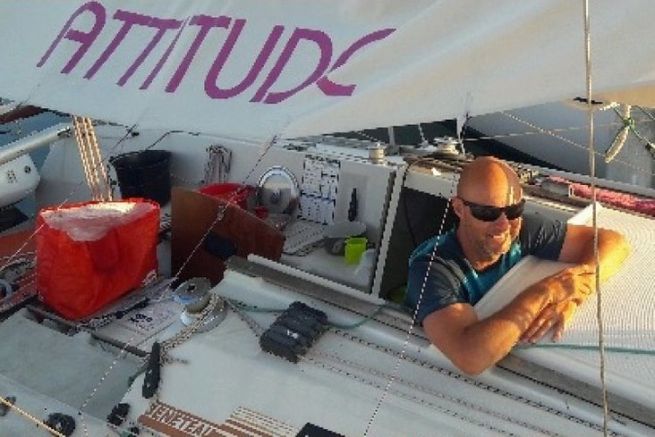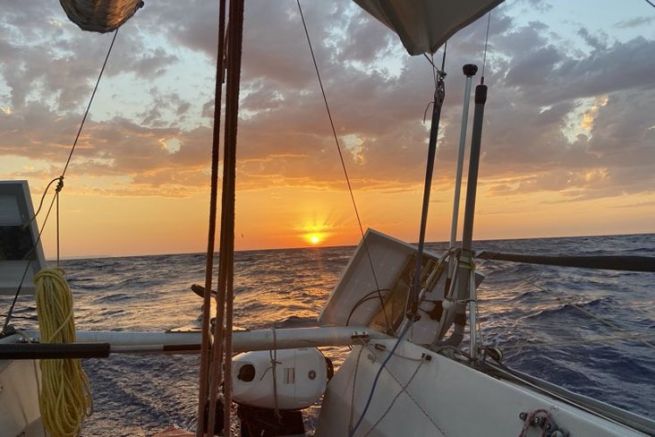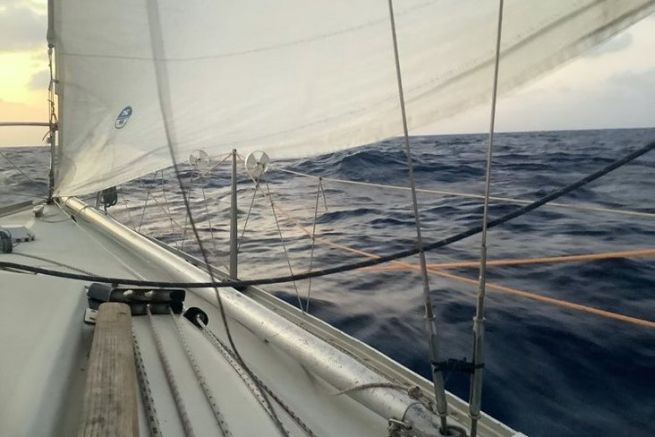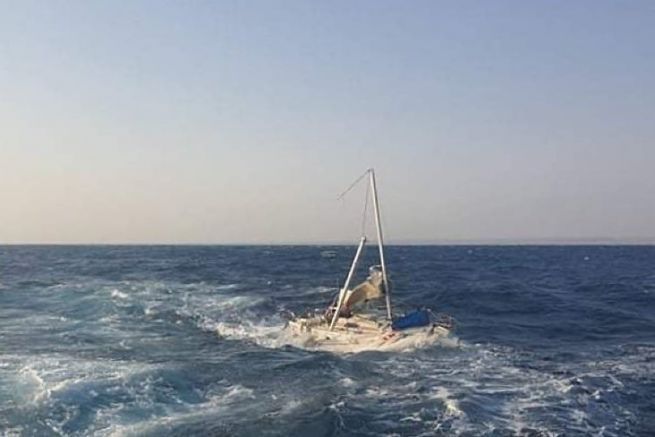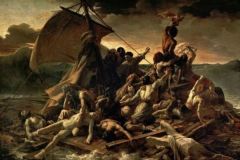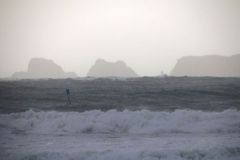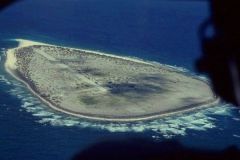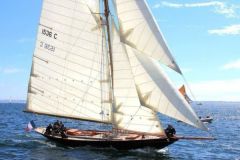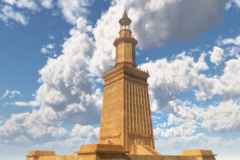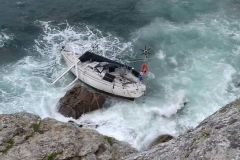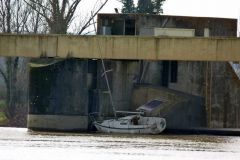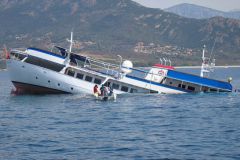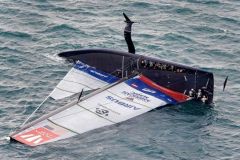Mark arrived at Port Said (Egypt), which marks the entrance to the Suez Canal . He has just completed a 500 mile direct crossing from the Crete. 6 days at sea single-handed with a wind bearing 15 knots average.
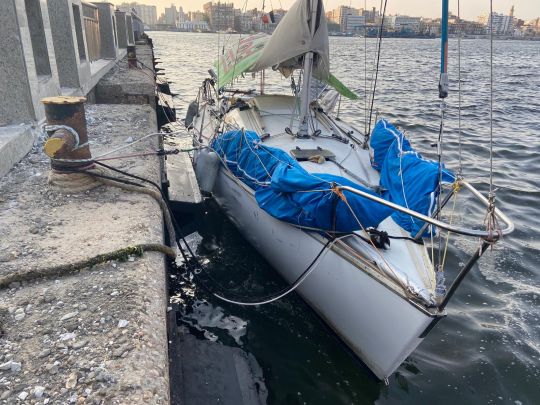
A Suez Canal passage supported by an efficient agent
There he is, having to negotiate his way through the canal. This administrative journey will require tough and frank discussions, but they will be successful thanks to the help of a member of the board of directors of the Felix company, a maritime service forwarder. Indeed, the invoice for the passage price includes several lines that must be ticked off. It starts with a passage price based on the volume of the ship ($250 for First Class 8), then the agent's fee ($100), then the medical fees due to Covid ($30 including a doctor on board), then an explosive search fee on board ($30), and finally a clearance from Port Said ($200) and immigration fees ($100). That's a total of $750 misspelled on a piece of paper.
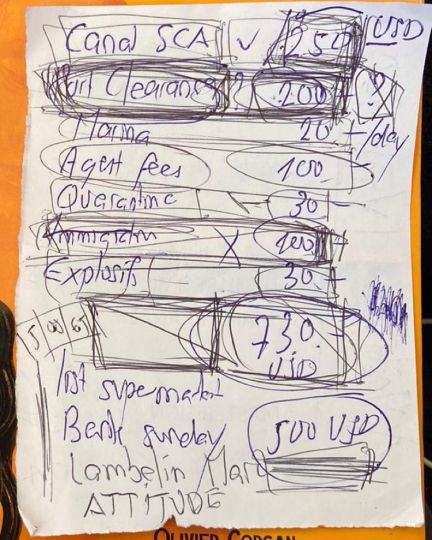
If Marc does not discuss the first lines of the quote, he does not include the clearance and immigration fees as there is no need for a visa for Egypt. Fortunately, the Felix Marine Agency has understood Marc's situation: not very wealthy, likes to do things officially, and does not have the culture of baksheesh. This agent will be struggling all weekend to get Marc and his Class 8 Attitude through the canal without any problems. At the end of the weekend (Saturday night), the case is heard with a bill in due form amounting to $558
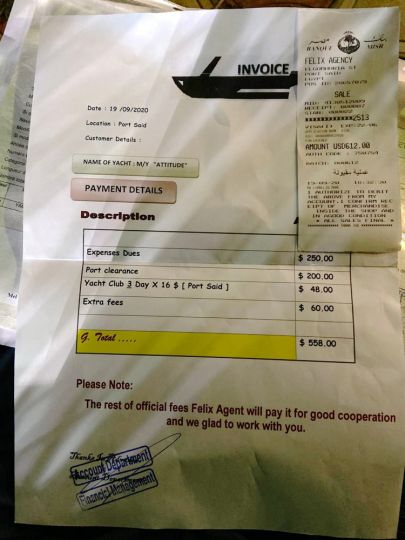
The Suez Canal crossed in 2 days
After filling up with water and shopping for food personally offered by the agency manager (without a visa, Marc was not allowed to leave the port enclosure), Attitude is ready to go. On Sunday morning, the harbour pilot arrived exactly on time for the rendezvous. 5:00 am, Attitude starts its first day in the canal, which is going well with an arrival at 2:30 pm for the evening stage in Ismailia (the Suez Canal crossing takes place over 2 days).

The night in that marina will be short. Tossed by the waves (like the first 5 nights in Egypt), Marc must constantly watch over his mooring. It is therefore tired that he waits for the second pilot to continue the descent of the canal.
The second day is going a little less well. The pilot is a little late, the canal closes a bascule bridge just in front of the boat which has to wait an hour to get back on the road, a strong current then prevents him from making progress at 5 knots with the engine. It is therefore more than two hours behind schedule that Marc and Attitude arrived in Suez. The canal is crossed, but the door to the south does not open.
Resumption of negotiations
On the other side, negotiations and demands for baksheesh resumed. It is a local from the marina who is going to succeed in unblocking the case without it being too heavy for Marc's bank account. The discussion will last 5 hours until 11pm, leaving Marc no rest. And it is only early in the morning, before all the administrations are in place, that a solution is found. Marc manages to get hold of 36 liters of gasoline. He's ready to set off for Djibouti 1350 miles away! All he needs are the boat's papers and his passport, which are still being held hostage.
It is only at 11:30 am, that Mark finally cast off from Egypt. Weary, tired, but happy to be back at sea only 5 days after his arrival in the country. Even in his wildest dreams, he hadn't imagined it would take so little time. Felix's effective intervention made it possible.
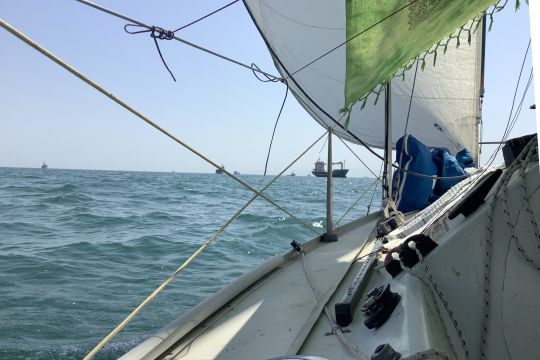
People in the Gulf
A final weather forecast predicts a downwind (north wind) of 8 knots, slowly increasing to 18 knots during the night. Conditions that he has already experienced over the last few days and for which the Class 8 is behaving very well under pilot.
When you leave Suez harbour, you have to go down about 150 miles of the Gulf of Suez before you reach the Red Sea. This narrow passage is lined with oil platforms and faces very heavy shipping traffic. There are boats coming in and out of the canal, others waiting at anchor, but also a fleet of fishing boats of all kinds. It is crowded!
While sailing downwind that afternoon, Marc discovered this overcrowded environment. But above all, he realised that more than half of the boats were not transmitting their position in AIS. Whether it be fishermen en route or freighters at anchor, many are not reported on AIS. In the absence of radar on Attitude, there is no way for Marc to spot them at night..
Not finding shelter to spend the night, Marc has no other solution than to continue. At 8pm, the wind starts to pick up. Still under genoa alone, Marc is not overly worried. The weather forecast had predicted this. Admittedly the wind is well above the 18 knots forecast, but it is still manageable. Night has fallen and Marc is starting his slalom between the platforms and the boats.
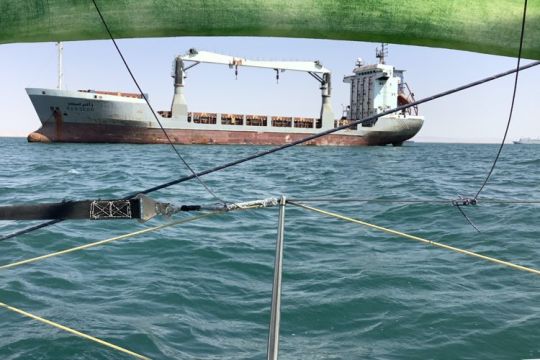
A wind that's forcing well above the forecast
But the wind keeps picking up. Marc estimates it (not easy in the dark of night) at 25-30 knots. This time, it's too much for the genoa. But impossible with the sea (between 2 and 3 m waves) and the boat going surfing, to go forward to lower it and hoist a smaller one. As for luffing up to windward, Marc feels that he is reaching the limits of the boat and the boat is in danger of capsizing once lying abeam of the waves. The sailor is trapped. He has to continue his escape downwind.
To slow down his endless descent, Marc let go of the sheets, the genoa is then feathered in front of the forestay and starts to tweak without endangering the mast or the boat.
Marc finds himself sitting at the back of his cockpit. Whereas before he was surfing the waves at more than 12 knots, the speed eased off to 4.5 knots with surfing at 8.5 knots (without sail!). By moving his body, Marc acts on his boat, just like when he was windsurfing. He finds himself in "controlled survival".
Impossible to luff
But at 2am, a new problem appears, the boat arrives in front of a coastal point. It is necessary to take 30° of course on the left. Without a sail, his boat can't stand the slightest wind. After two starts, Marc had to make a decision. His genoa is totally destroyed, there are only shreds left. He managed to sail along the coast a little and spotted a shelter a mile away. He managed to get the boat upwind and tried to sail upwind with the engine. Unfortunately, even at full throttle, the 5 horsepower outboard could not keep up with the wind and sea. At this point, Marc would find out later, the wind was recorded at 42 knots?
Marc decides to set a course. With no sail, he drifted at 2.5 knots. The coast was closing rapidly. He then headed for the other side, but this time it was the channel and his cargo ships that were closing in on him. Exhausted by several sleepless nights, Marc had to make a decision: he had to call for help.
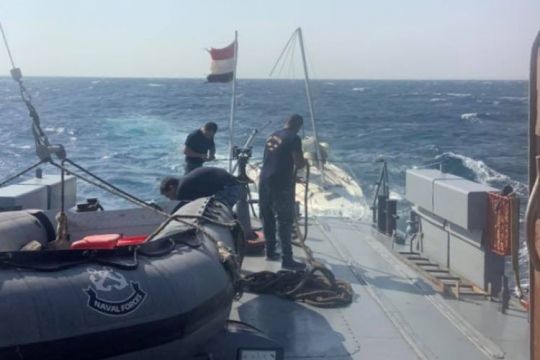
A controlled procedure
Very lucid, he thinks more than 45 minutes before making up his mind. He tries to call on the VHF, but there's no answer. He therefore triggered a "Drifting" DSC signal by pressing the VHF Detress button. Then he also triggers his PLB beacon and finally, with a very weak signal on his phone, he manages to reach Alindien Marsec (the Regional Cell in charge of maritime safety in the Indian Ocean) with whom he is in contact to prepare this voyage.
All these services will coordinate with the Egyptian Navy, which arrives 3 hours later to spot Attitude tossed by a rough and stormy sea.

A bow that cuts in two Attitude
Marc sees a military celebrity arrive on him. Surprisingly, this one instead of coming as a couple presents his bow. The shock is inevitable. On the first passage, the runners and backstay stuck in the bow cause the masthead to fall. On the second passage, the star in the cockpit on the survival against the boom. On the third passage, Marc sees the bow crashing on the descent. He takes his grab bag that he had prepared and grabs the outstretched hands of the soldiers who are pulling him up. Saved!
Quickly put in a booth, Marc cries all he can. He is saved, has nothing physically, but has nothing left either. This Class 8 has been his whole life for 6 years: his home, his reason and his project. He goes back on deck to find that the wreck of his boat is being towed behind the launch. But the boat is sailing at full speed. And quickly the boat is pushed forward and ends up sinking for good. Attitude sadly ends his life at the bottom of the Gulf of Suez in 25 m of water.
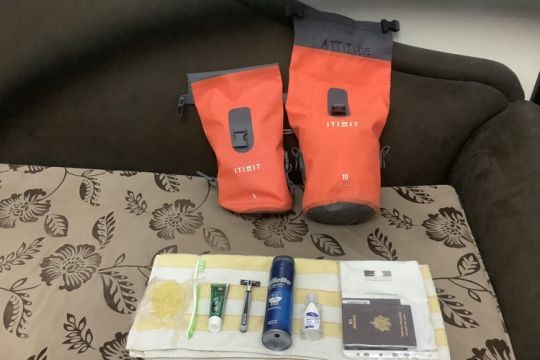
The shipwrecked man disembarked at the nearby military base in Zafarana. In shorts, barefoot, with just his papers, his glasses and an iPad, Marc lost everything. The Egyptians' handling of the situation is great. We're giving him clothes, access to a shower, a meal. Now he has to rebuild himself, to find a solution to continue his journey to India.
